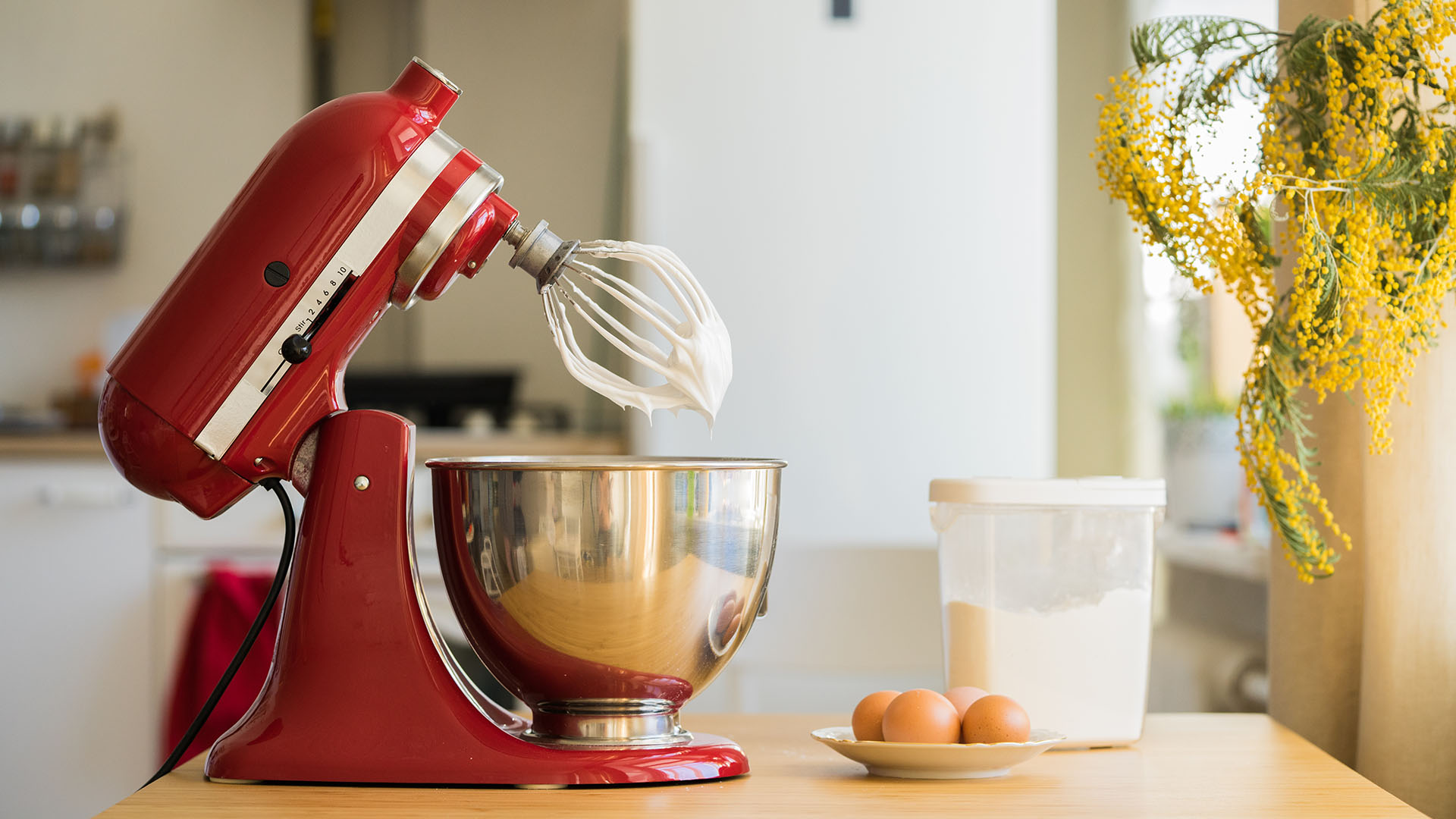Nov
15
Kitchen helper——Stand Mixer
What is Stand Mixer?
Stand mixers mount the motor driving the rotary action in a frame or stand which bears the weight of the device. Stand mixers are larger and have more powerful motors than their hand-held counterparts. They generally have a special bowl that is locked in place while the mixer is operating. A typical home stand mixer will include a wire whisk for whipping creams and egg whites; a flat beater for mixing batters; and a dough hook for kneading.
Stand mixers are generally available in either countertop (also called bench) or floor models. Heavy duty commercial models can have bowl capacities well in excess of 25 gallons (95 l) and weigh thousands of pounds (kilograms) but more typical home and light commercial models are equipped with bowls of around 1 gallon (4 l). Whether a mixer is a countertop or floor model depends on its size. Mixers that are 5 gallons (20 l) in size or smaller tend to be countertop mixers, while larger mixers tend to be floor models due to their size and weight.
Spiral mixers are specialist tools for mixing the dough. A spiral-shaped agitator remains stationary while the bowl rotates. This method enables spiral mixers to mix the same size dough batch much quicker and with less under-mixed dough than a similarly powered planetary mixer. Spiral mixers can mix dough with less agitator friction than planetary mixers. This allows the dough to be mixed without increasing its temperature, ensuring the dough can rise properly.
Planetary mixers consist of a bowl and an agitator. The bowl remains static, whilst the agitator is rapidly moved around the bowl to mix its contents. With the ability to mix a wide variety of ingredients, planetary mixers are more versatile than their spiral counterparts. Planetary mixers can be used to whip and blend, whereas spiral mixers cannot. They are normally used in Australia, India, and Europe too. The mixers are used all over the world.
Nov
14
Beer Glasses Buying Guide
I guess many people wonder why normally we use glasses to drink beer? When you drink out of a bottle or can, you leave your nose out of the party. Read on to know types of beer glasses.
Nov
13
How to choose baking pan sizes?
For today's people, baking is an indispensable way to cook food, whether at home or in a commercial kitchen. Therefore, a baking pan of various sizes and materials appeared on the market, So first of all, we need to know what is baking pan?
Oct
23
Do you like barbecue?
What is barbecue?
Meats being barbecued at a restaurant
Barbecue or barbeque (informally BBQ or barbie) is a cooking method, a style of food, and a name for a meal or gathering at which this style of food is cooked and served.
Barbecue can refer to the cooking method itself, the meat cooked this way, the cooking apparatus/machine used (the "barbecue grill" or simply "barbecue"), or to a type of social event featuring this type of cooking. Barbecuing is usually done outdoors by smoking the meat over wood or charcoal. Restaurant barbecue may be cooked in large, specially-designed brick or metal ovens. Barbecue is practiced in many areas of the world and there are numerous regional variations.
Barbecuing techniques include smoking, roasting or baking, braising and grilling. The original technique[citation needed] is cooking using smoke at low temperatures and long cooking times (several hours). Baking uses an oven to convection cook with moderate temperatures for an average cooking time of about an hour. Braising combines direct, dry heat charbroiling on a ribbed surface with a broth-filled pot for moist heat. Grilling is done over direct, dry heat, usually over a hot fire for a few minutes.
Jun
07
An Award Winning Brownie Recipe from Our Customer
What's the secret to making award winning brownies? This recipe uses real chocolate and cake flour for the perfect flavor and consistency.
Search
Categories
Popular Posts





















